#history of the occult
Text
A Magical Taxonomy
Warlock: from wær (old English, “pact/oath”) + loga (proto-Germanic, “liar”) + hard “-ck” (Scottish English); Oathbreaker (contextually; breaker of Baptismal Oaths; hence also Apostate)
Wizard: from Wis (old English, “knowledgeable”) + -ard (same, “too much of”); Possessor of too much knowledge
Witch: from weyk (proto-indo-European, “apart, separated, different”)[connotations akin to Latin’s “Sacre”]; Sacred Outsider
Sorcerer: from Sors (Latin, “Fate”) and Ser (same,“to bind”); Fate Manipulator
Druid: from dru (proto-Celtic, “Oak”) + weyd (same, “to see”); Oak-Seer, or Tree-Knower
Cleric: from kleros (Ancient Greek, “lots/ casting lots/ drawing lots”) [contextually; public servants were selected by drawing lots, as opposed to, say, voting]; Public Servant / Clerk
Bard: from bard (proto-Celtic, “Bard”); Bard
#Magic#etymology#dnd#history of the occult#occult#witch#Wizard#sorcerer#warlock#cleric#bard#bard bard#bard bard bard#bard bard bard bard#it’s bards all the way down
5K notes
·
View notes
Text


















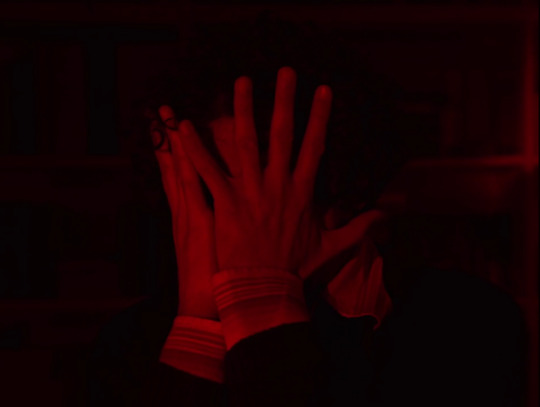

History of the Occult (2020)
#history of the occult#cristian ponce#hector ostrovsky#Nadia lozano#Casper uncal#agustin recondo#Ivan esquerre#talks
13 notes
·
View notes
Text
youtube
HELLO I am back begging you to watch a movie again. And in fact I am begging you not to watch the trailer farther than the title: History of The Occult. All you need to know going in is: it’s late 1980s Argentina & the team behind a hard hitting political talk show have gathered in a safe house to watch their last broadcast. It’s is the scariest movie I’ve seen in months (mileage may vary.)
I don’t know enough about 1980s Argentinian politics to tell you what the wider political metaphor is but even without that background it’s an incredible tight supernaturally tinged paranoid thriller, doing some fascinating aspect Ratio work.
It’s on kanopy if your library has that and tubi if you don’t. It’s a tight hour and twenty minutes and in fact you should start it at 10:40 ish so it ends at midnight like I did accidently which really adds to the whole ticking clock of it all. Please watch this and if you DO know about late 1980s Argentinian politics PLEASE watch this and tell me what you think the ending means.
6 notes
·
View notes
Text
The Ultimate Beginner’s Guide To Tarot Cards: A Brief History, How To Read Them And Choosing A Spread feat. Cheat Sheets
Cast your mind back to 2020. Well, if you can. I’ve blocked most of it out.
The national lockdowns were a hellish period for us all, unless you were one of the few billionaires able to profit from the global peril. But aside from OCD, I did take away a few things from that time.
And that was my love for tarot cards.
I’ve had my deck since my first year of university, so for about five or six years now. At first, I struggled to shuffle them, I found it hard to understand them and I just never really knew what to do with them. They were an ornament, not a hobby.
But it was only about three years later, when we all had to stay inside for months on end, that tarot became a crucial part of my weekly routine. Every Sunday I’d light a candle (preferably sandalwood or sage), put on the Life is Strange soundtrack and have my iPad on standby to help me research the meanings of the cards.
Then, I’d pull out my Rider Waite deck, take a few deep breaths, and call on the spirits to communicate with me through the deck. I’d pick up the deck and just hold it in my hands, inhaling, exhaling, inhaling, exhaling. I’d envision my energy rising from my chest up into my shoulder down through my arms, pulsating through my fingertips and right into the deck. And the energy from the deck would be pumped back into me. I became one with the cards.
And then, to complete this holistic, peaceful ritual I’d chuck ‘em on my bed and mix them together before compiling them back into a deck. Then, I’d lay them out in front of me (only now, when writing this sentence, do I realise that I don’t know any card terms, like I kind of put them in a stack and then smush them in one line so they’re fanned out?).
I close my eyes, hold out my hand, and let my fingertips select the cards representing my past, present and future. I collect the other cards into a deck and lay my selected cards in front of me. One by one I turn them over, using the booklet to help me decode my subconscious and messages from the spirits. I’d then use my iPad and a very helpful tarot website to help understand them even more.
Despite having a personal process that I’ve practiced many times now, there’s still so much I don’t know. I want to be able to read them without the assistance of a personal device, and ask for more than my past-present-future.
Why not tag along and join me on my tarot journey?
In today’s blog post, we are going to find out what tarot cards are, where they came from, the best ways to use tarot and how to read them.
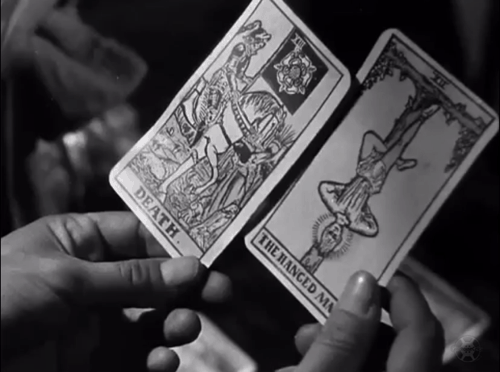
Let’s start with an easy one: what is tarot?
So, tarot is a pack of playing cards used since the mid-15th century. Today, they normally consist of 78 cards which are split into Major and Minor arcana. Originally, they were used in “trick-taking” games (to be honest, I don’t really get what this means, it’s a type of card game that’s hella complex, kk) in Europe, but in the 18th century, the occultists got involved.
They started using it to read the future. That being said, they’ve always been surrounded by occult themes, from a Dominican preacher calling out their inherent evil in a sermon - which we think is related to their use in gambling - to the introduction of astrological symbols in Florence at the turn of the 16th century.
The word “tarot” is derived from “tarrochi”, an Italian word which basically means “foolishness”. This was probably due to its association with the drinking, gambling and debauchery that surrounded them.
However, according to some spooky weirdos, tarot really began all the way back in ancient times and has links to Egypt and the Kabbalah (a critical school of thought that informed occultism).
"The origin of this pack of cards is very obscure. Some authorities seek to put it back as far as the ancient Egyptian Mysteries; others try to bring it forward as late as the fifteenth or even the sixteenth century ... [but] The only theory of ultimate interest about the Tarot is that it is an admirable symbolic picture of the Universe, based on the data of the Holy Qabalah."
- Aleister Crowley, probably the most famous occultist ever
They even say the first tarot deck exclusively used was derived from the Book of Hoth, and it was chockful of references to ancient Egypt. It’s still one of the most common decks used by occultists, alongside the Tarot of Marseilles and the Rider Waite deck.
So, what’s tarot card reading?
Tarot card reading is a type of cartomancy where people try to gain insight into the past, present n’ future. Or is it? Some believe it’s really about getting in touch with ourselves; our subconscious and our intuition. Somehow this helps us understand where we are coming from and going better, thereby “predicting” our future.
How you use them is completely up to you.
Each card has its own images and story, with the major arcana representing spiritual lessons and the minor representing our daily trials and struggles.
Personally, I call upon the spirits and believe they communicate with them by selecting the cards, giving me insights not only into myself but also my future.
The basic tarot card reading process
There are plenty of decks and ways to read the cards to pick from. But let’s start with a basic set of steps to get you started.
Set the scene: I like to create a calm, relatively tech-free environment and kick things off with lots of deep breathing. If I was cool enough to meditate, I would, but normally I grab a diet coke, put on some soothing music and just sit quietly for a mo.
Clear the deck: shuffling the cards is critical. Not only does it give you a fresh set of answers every time, it gives you a chance to connect with the cards. At the same time, think about what you want to ask the deck, or in my case, the spirits. I like to visualise this energy flowing between my arms and hands into the deck and back into me.
(If you’re doing a spread) Do your spread - aka how you lay out cards: pull out the cards for your spread one-by-one until you’ve completed it. For each card, look up in the little booklet that comes with your deck the basic meaning of the card and think about what it could mean for you. Look at the card and see how the symbols relate to you. You could even consider researching meanings online as they can offer more depth into other perspectives.
Complete the spread: When you’ve finished going through the cards one-by-one, take in the meanings of all the cards collectively, like how your life might progress from past to present to future.
Finish up with some questions: ask a question, pull a card from the deck and decode the answer.

Here’s a couple of different spreads to try
One of the most off-putting things about tarot is how much there is to take in. It’s not just this set of weird-looking, multiple-meaning cards in front of you, it’s what you’re supposed to do with them. Most occultists would tell you to start with asking some simple questions and pulling a card - the answer - from the deck. But what’s stopping you from getting your hands dirty and tryin’ out a spread?
I still only do one spread - the past, present and future. Now, I want to see how else I can up my tarot game.
So, what are the best spreads for novice tarot readers to start with?
Celtic cross: this 10 card spread highlights not just the past, present and future but also external influences and outcomes.
Five card spread: here, you stick with the basic past-present-future spread but add a card above and below the three cards, one which represents what’s driving this situation, and the other which is a potential outcome.
Horseshoe: this spread takes into account advice you should follow, obstacles and gives you an optimal action to resolve the problem at hand. This is great for tough decision-making.
How to read individual cards: the meanings of key symbols, images and themes
I’m a basic w*tch, k?
I still gotta use the booklet and use my trusty tarot site to properly uncover all the potential meanings of the cards. I’ve never taken the time to really learn how to read the cards myself, but it’s actually not that difficult. Tarot cards, particularly the Rider Waite deck, share themes, symbols and images that make reading the meaning of individual cards pretty straightforward.
Let’s run through them, shall we?
Cups: this suit is all about your emotions, openness and imagination
Wands: these cards represents your energy and your creativity
Swords: this one’s about your mind, so how you think and solve problems, and even communicate
Pentacles: this suit represents the physical world and how we interact with our work, homes and money
The court cards (King, Queen, Page and Knight): if multiple ones come up in a reading, you can interpret a progression as you move up or down in terms of authority. The Page and Knight often represent youth or inexperience, whereas the Queen and King represent adulthood and mastery. But they can also have more specific meanings, too.
King: leadership; success; attainment
Queen: empathy; compassion
Knight: taking action; mature energy; moving forward
Page: youthful; service
Each number has a specific meaning, too:
New beginnings; unity
Relationships; balance or duality
Creativity
Stability; structure
Conflict and change; growth
Harmony
Spiritual growth; life lessons
Understanding; accomplishment
Success; coming up to the completion of a cycle
Completion; enlightenment
The colours used in each card have different meanings:
Black: protection; negativity; illness; darkness
Red: safety; passion; anger
Pink: love; forgiveness; femininity
Orange: creativity; optimism
Brown: stability; earthliness; lack of boundaries
Yellow: opportunity; spontaneity
Gold: mastery; divinity
Green: healing; harmony; envy
Blue: peace; sadness; judgment
Purple: intuition; spirituality; reason
White: higher self; newness; birth
Silver: emotion; sensitivity
There are also a few critical symbols to watch out for:
The moon: change; passage of time; reflection
Keys: knowledge; discovery; opportunity
The ocean: possibility; emotion
Ship: personal journey; transformation
Tree: shelter; regeneration
Flag: pay attention for a major change
Major arcana: they represent big events or figures, or major influences and revelations
Minor arcana: they represent everyday events and influences
I know, I know - it’s a lot to take in!
While I recommend you review this regularly and use this list when doing tarot so you can “actively revise”, it might be easier to have a cheat sheet on-hand to begin with.
So, here’s some links to the best-rated tarot cheat sheets:
Cheat sheet 1
Cheat sheet 2
Cheat sheet 3
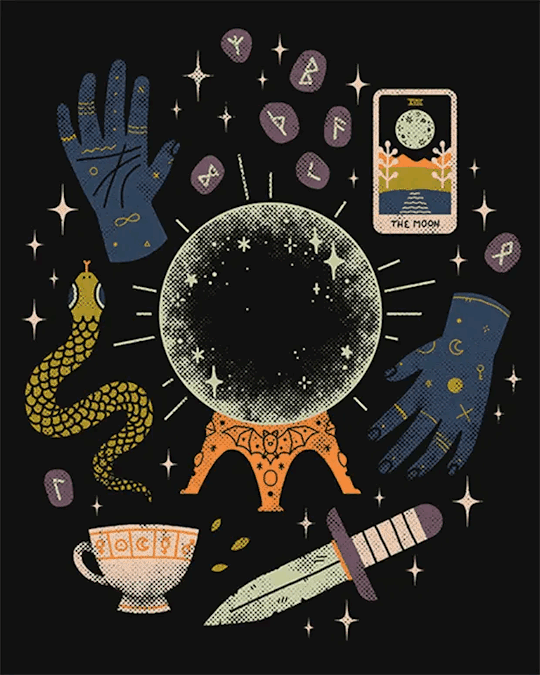
Ready to get your tarot on?
You should now be ready to take your first steps into the world of cartomancy. Ya welcome.
But before you grab your deck and start shuffling, I want to leave you with one final tip: find the process that works for you. Tarot is all about self-reflection, as much as it is about being a spooky bi4tch. Take your time, try different things and make it your own!
If you liked this post, make sure you like and reblog to let me know. Want to hear something spooky uhhh okay not every weekend but like every fortnight, okay, I’m getting back into it? Hit follow.
#tarot cards#tarot#history of the occult#Occult#witchcraft#witch#witches of tumblr#witch aesthetic#pagan#paganism#spells#spooky#ghost stories#Psychic#true ghost stories#scary stories#horror#horror movies#scariest horror movies#crystals#crystal ball#baby witch#tarot for beginners#tarot beginner
71 notes
·
View notes
Text
a concerning amount of witchblr will be like "um actually new years was stolen by europeans from the ancient god scroobus mcdoobus" and then you actually try to research scroobus mcdoobus and it turns out he was invented in the 1940s by a conspiracy theorist who powdered every meal with ketamine and thinks that queer people are reincarnated fish
#brightts ramblings#BEFORE I GET ATTACKED: THIS IS NOT AN ANTI-WITCH OR ANTI-PAGAN POST#im just literally begging witchblr and paganblr(?) to study history from proper sources#so you don't accidentally end up repeating misinfo or even outright bigoted info without realizing#you are not immune to propaganda!#this post is specifically ab new agey stuff like starseeds#but a lot of other stuff fits into this as well ie 'blessed be'#for further context i am not a witch or pagan myself but i DO study the occult/occult history#religion#spirituality#history
27K notes
·
View notes
Text

Sunday, March 24, 2024
"Human beings understand. Human beings create."
143. HISTORY OF THE OCCULT (Cristian Ponce, 2020) - Argentina - Streaming - Home Library, Plex Server - 82 minutes. New film #133.
1 note
·
View note
Text

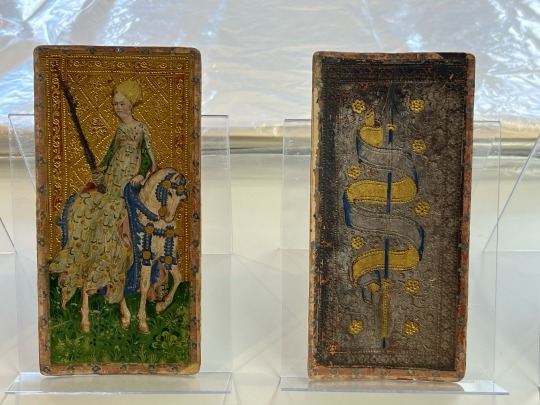
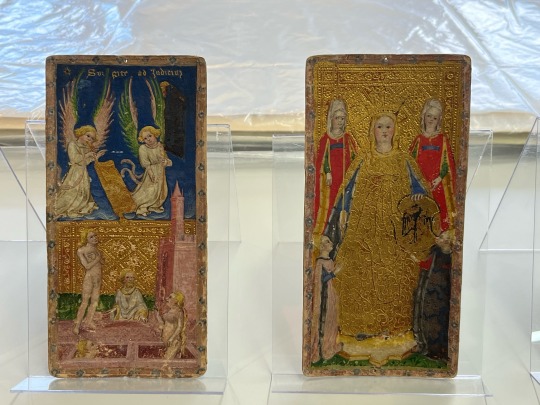

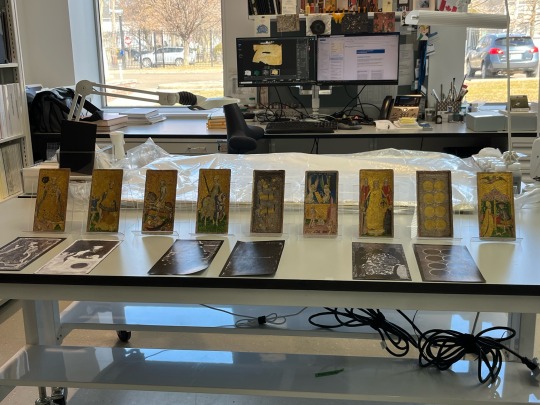
Fifteenth century tarot cards, possibly the oldest known deck. Look how beautiful they are! These are from way back before they were used for cartomancy.
#tarot#tarot cards#divination#cartomancy#tarot history#occult#occultism#medieval#medieval art#early modern
3K notes
·
View notes
Text
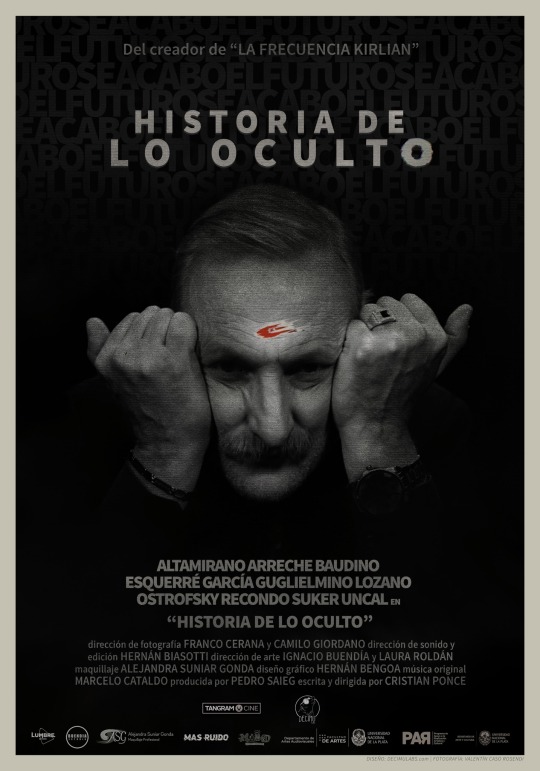
Chris: History of the Occult is an Argentinian new horror film about an investigatory tv series focusing on a warlock, lots of talking, not much action, cerebral, Watch: On Subscription Service for horror film fans looking for something new and different.
Richie: History of the Occult is a unique government conspiracy / witchcraft film from Argentina, it has a lot going for it but it has a lot aspects I wish they built on, Watch: On Subscription Service.
0 notes
Text
SCREAMBOX December Streaming Line-Up Includes HISTORY OF THE OCCULT, THE ANCHOR, NIGHT TERRORS, & More

Screambox has revealed the new films that will be joining the horror streaming service in December, including exclusive titles History of the Occult and The Anchor as well as cult favorites like Night Terrors, American Mary, and Housebound.
Letterboxd's highest-rated horror movie of 2021, History of the Occult, streams exclusively on Screambox on December 6. From Argentinian writer-director Cristian Ponce, the Lovecraftian faux-documentary pulls viewers deep into a world of conspiracy and witchcraft.
Bring the year to a close with South Korean mystery-thriller The Anchor beginning December 27. Writer-director Jung Ji-yeon's feature debut stars Chun Woo-hee (The Wailing), Shin Ha-kyun (Sympathy for Mr. Vengeance), and Lee Hye-young (Boys Over Flowers).
From The Texas Chainsaw Massacre and Poltergeist director Tobe Hooper, Night Terrors is streaming on Screambox today. The 1993 horror film stars A Nightmare on Elm Street icon Robert Englund in a dual role as both the Marquis de Sade and his sadomasochistic descendant.
Seven films are coming on December 16: 7 Below starring Val Kilmer (Top Gun) and Ving Rhames (Pulp Fiction); the Soska Sisters' American Mary starring Katharine Isabelle (Hannibal); Lovecraftian horror Banshee Chapter; cryptid found footage flick Bigfoot: The Lost Coast Tapes; Indonesian action-horror Dead Mine; festival favorite horror-comedy Housebound; and zombie-war hybrid Outpost: Black Sun.
These titles join Screambox’s growing library of unique horror content, including Terrifier, Terrifier 2, Pennywise: The Story of IT, Masters of Horror, 13 Nights of Elvira, Satan’s Little Helper, PussyCake, and Toxic Crusaders.
New users can get Screambox for only 99 cents a month for the first 3 months with the promo code scream99. Visit screambox.com/offers/scream99 to start screaming.
0 notes
Text
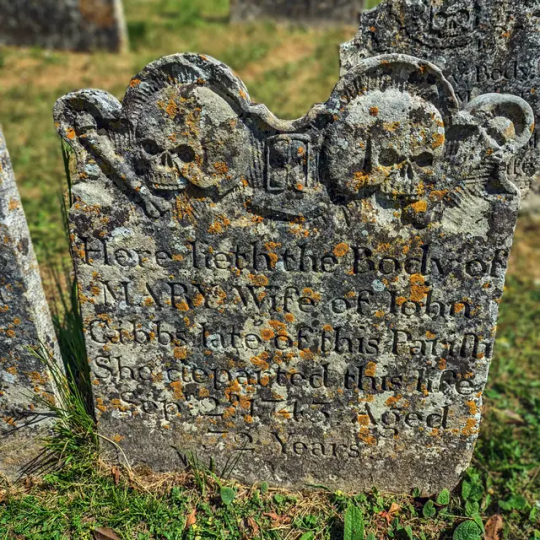
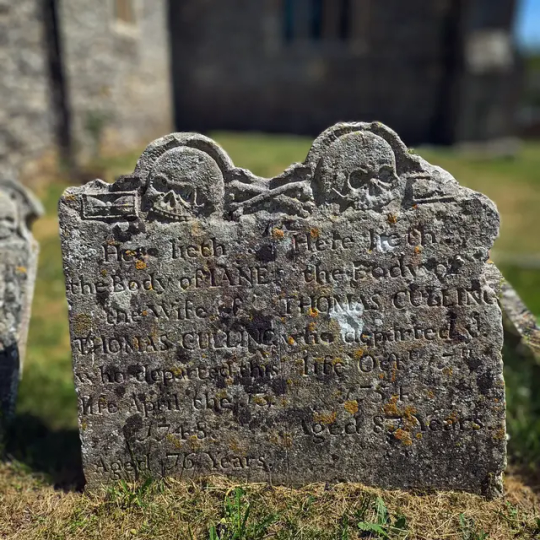


Memento Mori- Adisham - Kent.
#occult#gothic#folklore#memento mori#goth#skull#folk horror#dead#skulls#history#grave#gravestone#cemetery#burial#macabre#grim reaper#goth aesthetic#kent#england
947 notes
·
View notes
Text


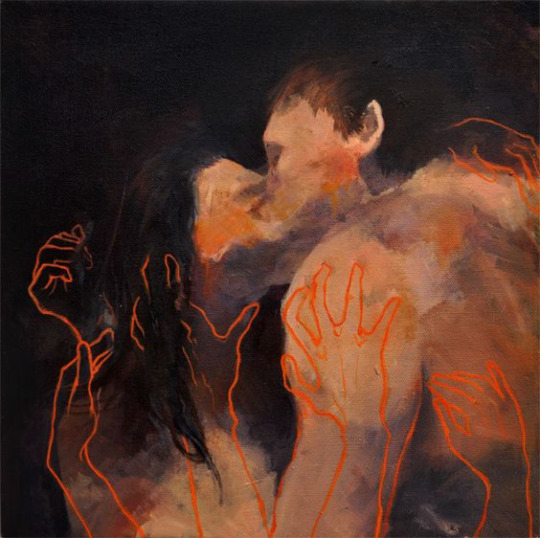
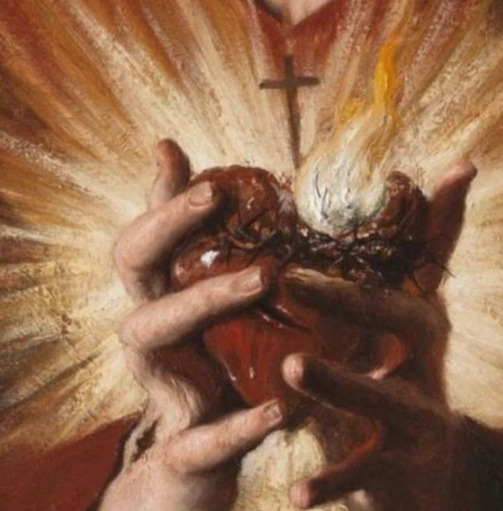
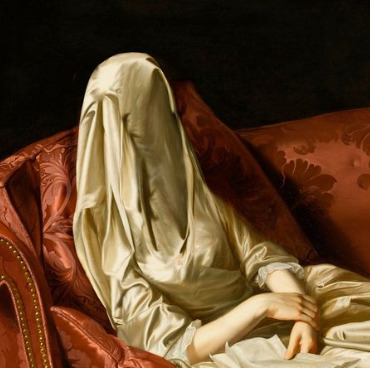
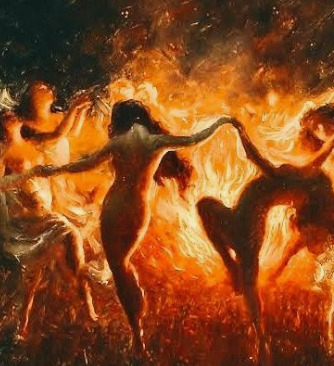


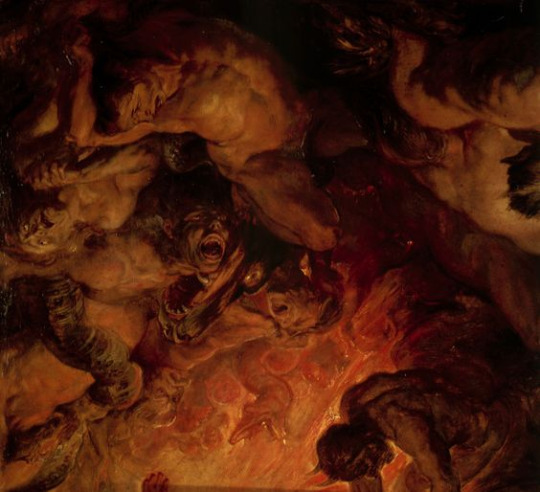
"Someone - was it van Gogh? - said that orange is the colour of insanity. Beauty is terror. We want to be devoured by it, to hide ourselves in that fire which refines us."
The Secret History - Donna Tartt
#orange#macabre#dark art#gothic art#occult art#dark academia#the secret history#vincent van gogh#jane eyre#moodboard#mbs
8K notes
·
View notes
Text
Timeline of Occult Figures
Here is a non-exhaustive list of people you will likely come across in researching anything under Occultism.
These dates are not going to be 100% accurate because many of these folks have either lied about their age or for some reason or another we don't have solid records of them.
---
Pythagoras 570-490 BCE
Socrates 470-399 BCE
Plato 424/5-348/7 BCE
Aristotle 384-322 BCE
Apollonius of Tyana 15-97 CE
Pliny the Elder 23/24AD-79CE
Ptolemy 100CE-170CE
Galen 129-216CE
Zosimos of Panopolis ~beginning of the 4th century
Roger Bacon 1220-1292
Henry Agrippa 1486-1535
Nostradamus 1503-1566
John Dee 1527-1608
Paracelsus 1593-1608
Jacob Grimm 1785-1863
Eliphas Levi 1810-1875
Helena Blavatsky 1831-1891
A. E. Waite 1857-1942
Margaret Murray 1863-1963
Aleister Crowley 1875-1947
Gerald Gardner 1890-1946
Robert Graves 1895-1985
Austin Osman Spare 1886-1956
Scott Cunningham 1956-1993
---
This is a re-upload because I can't find the original post I made so any additions made on that post have been lost. Please let me know if you have suggestions!
213 notes
·
View notes
Text
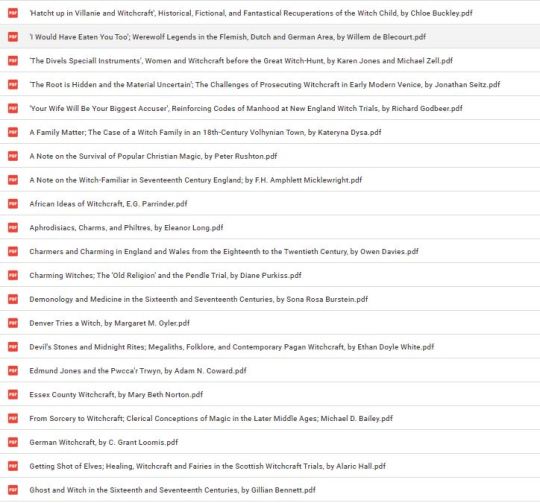
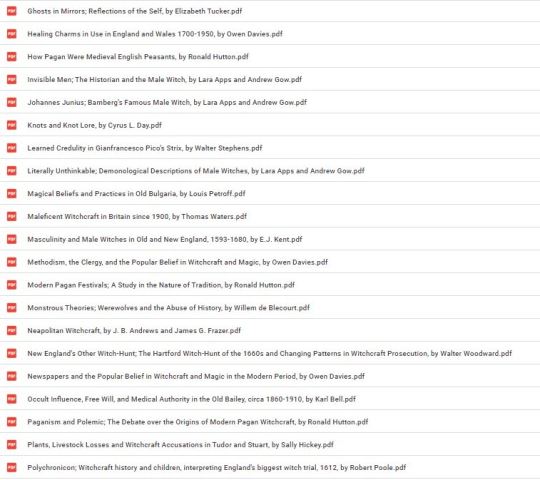

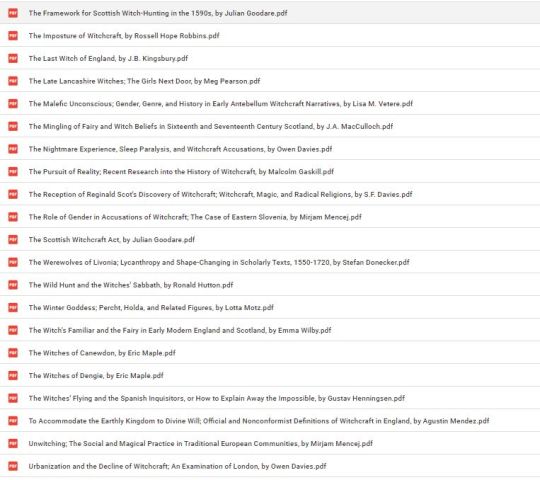


JSTOR Articles on the History of Witchcraft, Witch Trials, and Folk Magic Beliefs
This is a partial of of articles on these subjects that can be found in the JSTOR archives. This is not exhaustive - this is just the portion I've saved for my own studies (I've read and referenced about a third of them so far) and I encourage readers and researchers to do their own digging. I recommend the articles by Ronald Hutton, Owen Davies, Mary Beth Norton, Malcolm Gaskill, Michael D. Bailey, and Willem de Blecourt as a place to start.
If you don't have personal access to JSTOR, you may be able to access the archive through your local library, university, museum, or historical society.
Full text list of titles below the cut:
'Hatcht up in Villanie and Witchcraft': Historical, Fiction, and Fantastical Recuperations of the Witch Child, by Chloe Buckley
'I Would Have Eaten You Too': Werewolf Legends in the Flemish, Dutch and German Area, by Willem de Blecourt
'The Divels Special Instruments': Women and Witchcraft before the Great Witch-hunt, by Karen Jones and Michael Zell
'The Root is Hidden and the Material Uncertain': The Challenges of Prosecuting Witchcraft in Early Modern Venice, by Jonathan Seitz
'Your Wife Will Be Your Biggest Accuser': Reinforcing Codes of Manhood at New England Witch Trials, by Richard Godbeer
A Family Matter: The CAse of a Witch Family in an 18th-Century Volhynian Town, by Kateryna Dysa
A Note on the Survival of Popular Christian Magic, by Peter Rushton
A Note on the Witch-Familiar in Seventeenth Century England, by F.H. Amphlett Micklewright
African Ideas of Witchcraft, by E.G. Parrinder
Aprodisiacs, Charms, and Philtres, by Eleanor Long
Charmers and Charming in England and Wales from the Eighteenth to the Twentieth Century, by Owen Davies
Charming Witches: The 'Old Religion' and the Pendle Trial, by Diane Purkiss
Demonology and Medicine in the Sixteenth and Seventeenth Centuries, by Sona Rosa Burstein
Denver Tries A Witch, by Margaret M. Oyler
Devil's Stones and Midnight Rites: Megaliths, Folklore, and Contemporary Pagan Witchcraft, by Ethan Doyle White
Edmund Jones and the Pwcca'r Trwyn, by Adam N. Coward
Essex County Witchcraft, by Mary Beth Norton
From Sorcery to Witchcraft: Clerical Conceptions of Magic in the Later Middle Ages, by Michael D. Bailey
German Witchcraft, by C. Grant Loomis
Getting of Elves: Healing, Witchcraft and Fairies in the Scottish Witchcraft Trials, by Alaric Hall
Ghost and Witch in the Sixteenth and Seventeenth Centuries, by Gillian Bennett
Ghosts in Mirrors: Reflections of the Self, by Elizabeth Tucker
Healing Charms in Use in England and Wales 1700-1950, by Owen Davies
How Pagan Were Medieval English Peasants?, by Ronald Hutton
Invisible Men: The Historian and the Male Witch, by Lara Apps and Andrew Gow
Johannes Junius: Bamberg's Famous Male Witch, by Lara Apps and Andrew Gow
Knots and Knot Lore, by Cyrus L. Day
Learned Credulity in Gianfrancesco Pico's Strix, by Walter Stephens
Literally Unthinkable: Demonological Descriptions of Male Witches, by Lara Apps and Andrew Gow
Magical Beliefs and Practices in Old Bulgaria, by Louis Petroff
Maleficent Witchcraft in Britian since 1900, by Thomas Waters
Masculinity and Male Witches in Old and New England, 1593-1680, by E.J. Kent
Methodism, the Clergy, and the Popular Belief in Witchcraft and Magic, by Owen Davies
Modern Pagan Festivals: A Study in the Nature of Tradition, by Ronald Hutton
Monstrous Theories: Werewolves and the Abuse of History, by Willem de Blecourt
Neapolitan Witchcraft, by J.B. Andrews and James G. Frazer
New England's Other Witch-Hunt: The Hartford Witch-Hunt of the 1660s and Changing Patterns in Witchcraft Prosecution, by Walter Woodward
Newspapers and the Popular Belief in Witchcraft and Magic in the Modern Period, by Owen Davies
Occult Influence, Free Will, and Medical Authority in the Old Bailey, circa 1860-1910, by Karl Bell
Paganism and Polemic: The Debate over the Origins of Modern Pagan Witchcraft, by Ronald Hutton
Plants, Livestock Losses and Witchcraft Accusations in Tudor and Stuart England, by Sally Hickey
Polychronican: Witchcraft History and Children, interpreting England's Biggest Witch Trial, 1612, by Robert Poole
Publishing for the Masses: Early Modern English Witchcraft Pamphlets, by Carla Suhr
Rethinking with Demons: The Campaign against Superstition in Late Medieval and Early Modern Europe from a Cognitive Perspective, by Andrew Keitt
Seasonal Festivity in Late Medieval England, Some Further Reflections, by Ronald Hutton
Secondary Targets: Male Witches on Trial, by Lara Apps and Andrew Gow
Some Notes on Modern Somerset Witch-Lore, by R.L. Tongue
Some Notes on the History and Practice of Witchcraft in the Eastern Counties, by L.F. Newman
Some Seventeenth-Century Books of Magic, by K.M. Briggs
Stones and Spirits, by Jane P. Davidson and Christopher John Duffin
Superstitions, Magic, and Witchcraft, by Jeffrey R. Watt
The 1850s Prosecution of Gerasim Fedotov for Witchcraft, by Christine D. Worobec
The Catholic Salem: How the Devil Destroyed a Saint's Parish (Mattaincourt, 1627-31), by William Monter
The Celtic Tarot and the Secret Tradition: A Study in Modern Legend Making, by Juliette Wood
The Cult of Seely Wights in Scotland, by Julian Goodare
The Decline of Magic: Challenge and Response in Early Enlightenment England, by Michael Hunter
The Devil-Worshippers at the Prom: Rumor-Panic as Therapeutic Magic, by Bill Ellis
The Devil's Pact: Diabolic Writing and Oral Tradition, by Kimberly Ball
The Discovery of Witches: Matthew Hopkins' Defense of his Witch-hunting Methods, by Sheilagh Ilona O'Brien
The Disenchantment of Magic: Spells, Charms, and Superstition in Early European Witchcraft Literature, by Michael D. Bailey
The Epistemology of Sexual Trauma in Witches' Sabbaths, Satanic Ritual Abuse, and Alien Abduction Narratives, by Joseph Laycock
The European Witchcraft Debate and the Dutch Variant, by Marijke Gijswijt-Hofstra
The Flying Phallus and the Laughing Inquisitor: Penis Theft in the Malleus Maleficarum, by Moira Smith
The Framework for Scottish Witch-Hunting for the 1590s, by Julian Goodare
The Imposture of Witchcraft, by Rossell Hope Robbins
The Last Witch of England, by J.B. Kingsbury
The Late Lancashire Witches: The Girls Next Door, by Meg Pearson
The Malefic Unconscious: Gender, Genre, and History in Early Antebellum Witchcraft Narratives, by Lisa M. Vetere
The Mingling of Fairy and Witch Beliefs in Sixteenth and Seventeenth Century Scotland, by J.A. MacCulloch
The Nightmare Experience, Sleep Paralysis, and Witchcraft Accusations, by Owen Davies
The Pursuit of Reality: Recent Research into the History of Witchcraft, by Malcolm Gaskill
The Reception of Reginald Scot's Discovery of Witchcraft: Witchcraft, Magic, and Radical Religions, by S.F. Davies
The Role of Gender in Accusations of Witchcraft: The Case of Eastern Slovenia, by Mirjam Mencej
The Scottish Witchcraft Act, by Julian Goodare
The Werewolves of Livonia: Lycanthropy and Shape-Changing in Scholarly Texts, 1550-1720, by Stefan Donecker
The Wild Hunter and the Witches' Sabbath, by Ronald Hutton
The Winter Goddess: Percht, Holda, and Related Figures, by Lotta Motz
The Witch's Familiar and the Fairy in Early Modern England and Scotland, by Emma Wilby
The Witches of Canewdon, by Eric Maple
The Witches of Dengie, by Eric Maple
The Witches' Flying and the Spanish Inquisitors, or How to Explain Away the Impossible, by Gustav Henningsen
To Accommodate the Earthly Kingdom to Divine Will: Official and Nonconformist Definitions of Witchcraft in England, by Agustin Mendez
Unwitching: The Social and Magical Practice in Traditional European Communities, by Mirjam Mencej
Urbanization and the Decline of Witchcraft: An Examination of London, by Owen Davies
Weather, Prayer, and Magical Jugs, by Ralph Merrifield
Witchcraft and Evidence in Early Modern England, by Malcolm Gaskill
Witchcraft and Magic in the Elizabethan Drama by H.W. Herrington
Witchcraft and Magic in the Rochford Hundred, by Eric Maple
Witchcraft and Old Women in Early Modern Germany, by Alison Rowlands
Witchcraft and Sexual Knowledge in Early Modern England, by Julia M. Garrett
Witchcraft and Silence in Guillaume Cazaux's 'The Mass of Saint Secaire', by William G. Pooley
Witchcraft and the Early Modern Imagination, by Robin Briggs
Witchcraft and the Western Imagination by Lyndal Roper
Witchcraft Belief and Trals in Early Modern Ireland, by Andrew Sneddon
Witchcraft Deaths, by Mimi Clar
Witchcraft Fears and Psychosocial Factors in Disease, by Edward Bever
Witchcraft for Sale, by T.M. Pearce
Witchcraft in Denmark, by Gustav Henningsen
Witchcraft in Germany, by Taras Lukach
Witchcraft in Kilkenny, by T. Crofton Croker
Witchcraft in Anglo-American Colonies, by Mary Beth Norton
Witchcraft in the Central Balkans I: Characteristics of Witches, by T.P. Vukanovic
Witchcraft in the Central Balkans II: Protection Against Witches, by T.P. Vukanovic
Witchcraft Justice and Human Rights in Africa, Cases from Malawi, by Adam Ashforth
Witchcraft Magic and Spirits on the Border of Pennsylvania and West Virginia, by S.P. Bayard
Witchcraft Persecutions in the Post-Craze Era: The Case of Ann Izzard of Great Paxton, 1808, by Stephen A. Mitchell
Witchcraft Prosecutions and the Decline of Magic, by Edward Bever
Witchcraft, by Ray B. Browne
Witchcraft, Poison, Law, and Atlantic Slavery, by Diana Paton
Witchcraft, Politics, and Memory in Seventeeth-Century England, by Malcolm Gaskill
Witchcraft, Spirit Possession and Heresy, by Lucy Mair
Witchcraft, Women's Honour and Customary Law in Early Modern Wales, by Sally Parkin
Witches and Witchbusters, by Jacqueline Simpson
Witches, Cunning Folk, and Competition in Denmark, by Timothy R. Tangherlini
Witches' Herbs on Trial, by Michael Ostling
#witchcraft#witchblr#history#history of witchcraft#occult#witch trials#research#recommended reading#book recs#jstor
2K notes
·
View notes
Text


This is a painting (top) I made a few years ago as a tribute to John William Waterhouse's work named ''The Magic Circle'' (bottom).
The mood, stortytelling and simplicity of the scene really caught my attention, and I wanted to take those elements and add more dynamicism to it when working on my interpretation.
I hope you like it!
Best,
JCH
#dungeons and dragons#board games#concept art#fantasy art#tabletop games#digital painting#magic the gathering#character design#ancient history#witch#occult#sorceress#wicca#gothic#pagan#dark art#the witcher#dragon age
230 notes
·
View notes
Text

When Dream comes to the New Inn in search of Hob, he is surprised to find his friend looking...quite different from what he has come to expect from Hob Gadling.
#witch!Hob#he's contemplating a new spell#he also writes books about occultism and occasionally gives lectures as an expert on the history of paganism in England#dreamling#the sandman fanart#dream of the endless#hob gadling#teejaystumbles
344 notes
·
View notes
Text
The whole "things are organized the way they are for a reason" rhetoric in witchy, occult, and pagan circles can actually do more harm than good, because it suggests that there's nothing problematic in older texts and traditions, and thus discourages critical thinking and investigation into their origins, intentions, and impact. We have people who have no idea just how much antisemitism and appropriation of Judaism is in gentile western esotericism. We have people who think that if you worship X deity the littlest bittest wrong you're gonna get smote into a crater, even though all evidence points to the worship of this deity varying wildly in different times of places. We have people who think Gardnerian Wicca is utterly irreproachable when it's as imperfect and messy as the rest of 'em.
Sometimes the reason things are the way they are is because somebody was a dick, or because they half-assed it, or even whole-assed it. Sometimes they were really convinced they knew stuff about things they knew nothing about. Those people out there who are so convinced that you'll get yourself blown up if you get one thing the teeniest bit wrong would absolutely die if they knew what was going on in those some of those "respectable" texts and traditions out there.
If you haven't already, I strongly recommend checking out Dr. Justin Sledge's YouTube channel ESOTERICA and Dr. Angela Puca's channel Angela's Symposium. They're great channels for learning about the actual history of the occult and modern paganism, which is way messier and way more fascinating than a lot of people realize. This supposed golden age where everybody respected and followed The Wisdom Of Those Dudes Who Had It All Figured Out just never existed. There were no Dudes Who Had It All Figured Out. There were, however, a lot of people making it up as they went. Thus it always was, and thus it will ever be.
179 notes
·
View notes